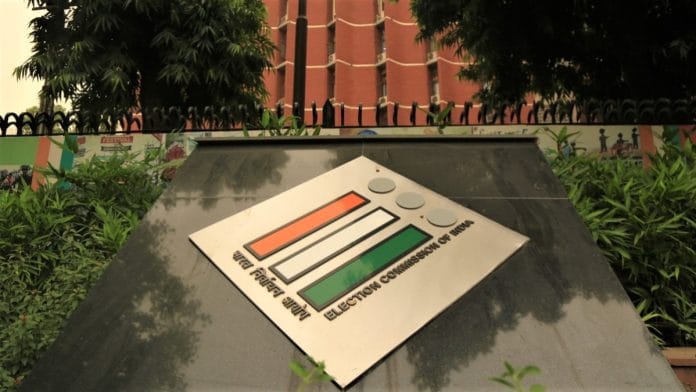Thank you dear subscribers, we are overwhelmed with your response.
Your Turn is a unique section from ThePrint featuring points of view from its subscribers. If you are a subscriber, have a point of view, please send it to us. If not, do subscribe here: https://englishdev.theprint.in/subscribe/
India, with its staggering population of approximately 1.4 billion people (according to the World Bank), stands as the world’s most populous country. This demographic magnitude makes it imperative to scrutinize the nation’s governance and the intricate processes that determine its leadership. At the heart of this democratic enterprise lies the Constitution of India, which provides for a Democratic polity as enshrined in its Preamble, wherein the sovereignty resides with “We the people of India”, governed by their representatives elected every 5 years to the Lower House of the Parliament (Lok Sabha). The responsibility of conducting free and fair elections every five years rests with the independent constitutional body known as the Election Commission of India (ECI).
This opinion piece aims to analyze some contentious questions surrounding India’s electoral process and its outcomes and suggest reforms, focusing primarily on voter turnout and the mandate of the elected representatives, by drawing insights from the latest parliamentary general elections held in 2019 to elect the 17th Lok Sabha.
Salient features of the Indian electoral system
The Indian electoral system as outlined in the Constitution of India and the Representation of People’s Act provides for a Universal Adult Franchise where any citizen above the age of 18 years is eligible to register and cast their vote, First Past the Post System (FPTPS) where the candidate with maximum votes is declared as the winner of that constituency and a Multi-Party System where any number of candidates can contest in the elections subject to prescribed eligibility criteria, either representing a political party or as an independent candidate. For parliamentary general elections, the Indian territory is delimited into 543 constituencies, from which one member is elected directly by the electorate to represent them at the Lok Sabha.
Low Voter Turnout
In the 2019 parliamentary elections, India’s electorate, numbering 91.2 crore (above 18 years of age), saw only 67.3% participation according to the data from the ECI website, revealing concerns about the representativeness of elected members. While male and female turnout rates and vote shares align, the third gender’s low turnout and unrepresentative vote share highlight a lack of inclusivity. The major reasons for low voter turnouts are internal and external migration of the vote-eligible populations and the general disinterest in politics and electoral processes, urging the need for accessible voting options and a politically active citizenry.
Mandate of Elected Representatives
India’s multi-party system and the First Past the Post electoral system have resulted in candidates securing victories without majority mandates i.e., electorate share and vote share is less than 50%. In the 2019 parliamentary elections, it has been observed that only 8 constituencies out of 543 witnessed elected candidates securing over 50% of the total electorate votes, and 341 constituencies out of 543 saw elected candidates securing more than 50% of the polled votes, raising questions about the fairness of electoral outcomes. Low voter turnout and the first-past-the-post system’s historical adoption due to literacy challenges at the time of independence contributed to these issues.
Envisioned Electoral Reforms
In the quest for a more resilient democratic structure, ECI should consider the implementation of Preferential Voting with the Single Transferable Vote (STV) system considering the improved literacy rates of the citizens. This approach, already utilized in electing the President of India and a segment of members in state legislative councils, could be extended to Lok Sabha, state assembly, and local bodies elections. The STV system enables voters to rank candidates based on preference, ensuring that even if their top choice doesn’t secure victory, their vote can be transferred to the next preferred candidate resulting in fair electoral outcomes.
Despite controversies circling around tampering with Electronic Voting Machines (EVMs), ECI should explore the possibility of developing a robust foolproof computerized remote voting system with tele- tele-verification to empower citizens residing in any part of the country to cast their votes from nearby polling booths to their home constituencies.
As India navigates the evolving landscape of democracy, implementing these reforms can contribute to a more inclusive, representative, and resilient electoral system.
These pieces are being published as they have been received – they have not been edited/fact-checked by ThePrint.


